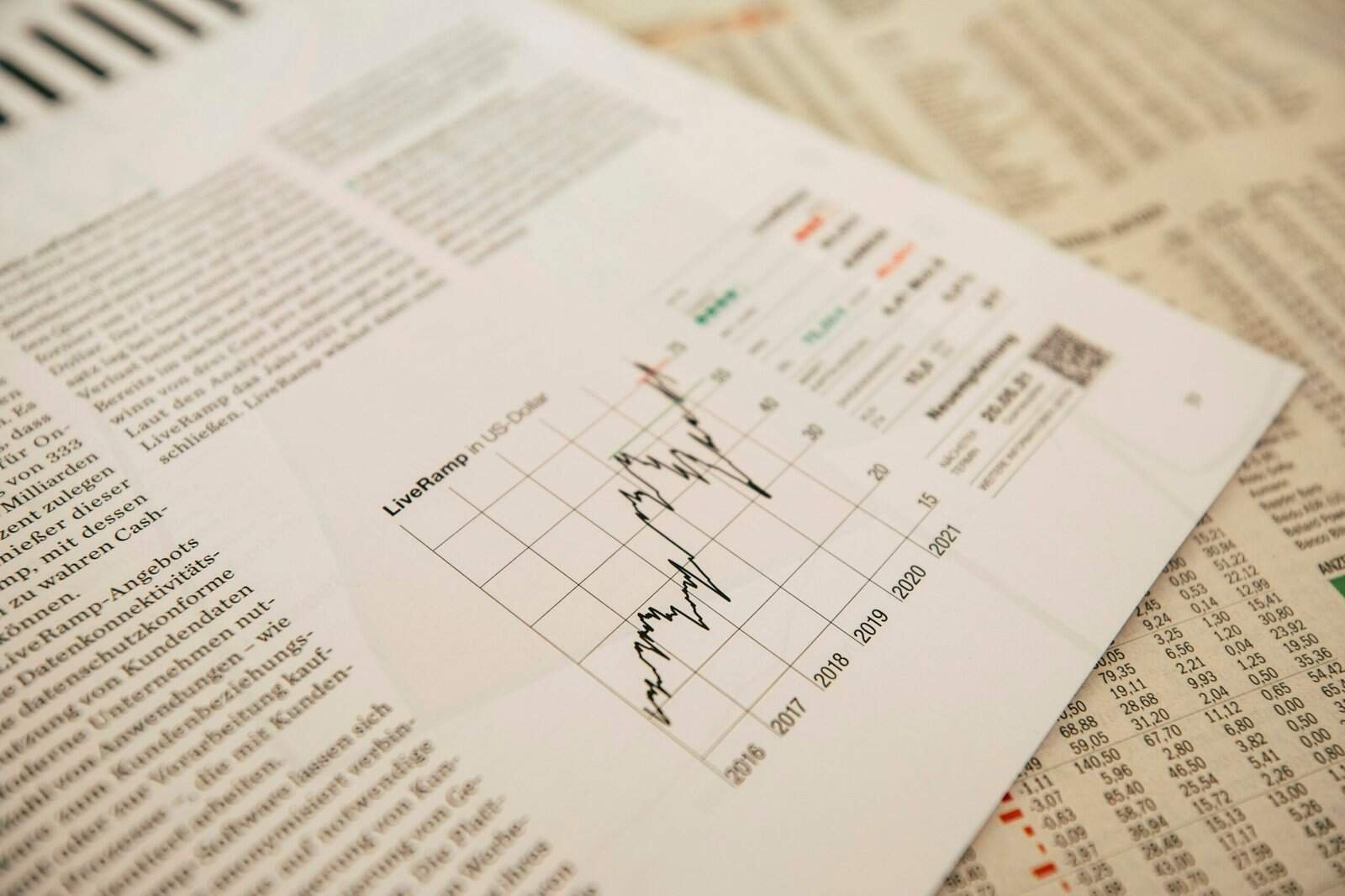Have you ever wondered how to safeguard your financial future when the markets are unpredictable? Navigating the ups and downs of volatile markets can feel overwhelming, but with the right strategies in place, you can protect your investments and even find opportunities amid the chaos. Managing your investments wisely in unpredictable times requires a proactive approach and a well-thought-out plan.
Understanding Market Volatility
Before diving into strategies, it’s essential to understand what market volatility is. Volatility refers to the rate at which the price of assets rises or falls. In volatile markets, prices can swing significantly in a short period, often due to economic events, geopolitical issues, or variations in investor sentiment. While this can present challenges for investors, those with a solid strategy can navigate these fluctuations successfully.
Why Does Volatility Occur?
Market volatility can result from several factors. Economic data releases, geopolitical tensions, and unexpected global events can all contribute. Investors may react emotionally to news, leading to rapid buying or selling, which further increases volatility. Understanding these triggers can help you anticipate and prepare for volatile periods.
Impact on Investments
Volatility affects investments by increasing the risk of substantial losses—but it can also present opportunities for gains. When prices decline, it may be possible to purchase high-quality stocks at a discount. Conversely, rapid price increases can provide opportunities for profit by selling high. However, without a strategy, the unpredictability can also lead to rash decisions that undermine your financial goals.
Building a Diversified Portfolio
One of the best strategies to protect your investments in volatile markets is diversification. By spreading your investments across different asset classes and sectors, you reduce the risk of a single investment severely impacting your portfolio. Diversification is like financial self-defense, helping to buffer against major losses.
How to Diversify
Consider investing in a mix of stocks, bonds, real estate, and commodities. Each asset class responds differently to market conditions, which can help stabilize your portfolio. For example, when stock markets are plummeting, bonds or certain commodities might hold their value or even increase in price.
| Asset Class | Potential Benefits |
|---|---|
| Stocks | Growth potential, dividends |
| Bonds | Stability, income through interest |
| Real Estate | Income potential, hedge against inflation |
| Commodities | Safe haven in tumultuous times |
Geographic and Sector Diversification
Additionally, diversify geographically and across different sectors of the economy. A well-rounded portfolio might include international investments and stocks from various industries such as technology, healthcare, and consumer goods. This diversity ensures you’re not overly exposed to the risks inherent in any single region or sector.

Utilizing Hedging Strategies
Hedging involves making strategic investments to offset potential losses in another investment. This technique can protect your portfolio from unexpected swings in the market.
Common Hedging Techniques
Options and futures contracts are popular hedging instruments. Options give you the right to buy or sell an asset at a predetermined price, which can be beneficial in volatile markets. Futures contracts, on the other hand, obligate you to buy or sell at a set price, minimizing potential losses due to market shifts.
Another approach is to invest in inverse ETFs, which are designed to increase in value when the market declines. While these can be useful for short-term protection, they are not generally recommended as long-term investments.
Establishing an Emergency Fund
Having an emergency fund is crucial, especially in uncertain times. An emergency fund provides financial security, allowing you to cover essential expenses without having to liquidate your investments during market downturns, which could result in realizing losses.
How Much to Save?
Financial advisors typically recommend saving enough to cover three to six months’ worth of living expenses. This fund serves as a buffer during times of job loss, unexpected medical expenses, or other financial strains that could force you to sell investments during unfavorable market conditions.

Maintaining a Long-Term Perspective
When markets fluctuate wildly, it’s easy to panic and make impulsive decisions. However, maintaining a long-term perspective is key to successful investing.
Why Long-Term Thinking Matters
Historically, markets have demonstrated resilience and a tendency to recover from downturns over time. By keeping a focus on long-term goals rather than short-term market movements, you can avoid the pitfalls of emotional decision-making.
Regular Review and Rebalance
While maintaining a long-term view, it’s also important to regularly review your investment portfolio. Rebalancing involves adjusting the weights of the assets in your portfolio back to desired levels when market movements cause them to drift. This ensures your portfolio continues to reflect your risk tolerance and financial objectives.
Leveraging Dollar-Cost Averaging
Another effective strategy in volatile markets is dollar-cost averaging, which involves consistently investing a fixed amount of money at regular intervals. This approach reduces the impact of market volatility on your overall investment.
How It Works
By investing the same amount regularly, you buy more shares when prices are low and fewer shares when prices are high. Over time, this often results in purchasing more shares at lower average prices. The discipline of dollar-cost averaging can help you remain committed to your investment strategy despite market fluctuations.

Staying Informed and Educated
Knowledge is a powerful tool in managing investments during volatile times. Staying informed about market trends, economic indicators, and world events helps you make educated decisions about your portfolio.
Resources for Staying Informed
Consider utilizing financial news platforms, attending webinars, or subscribing to newsletters from reputable financial analysts and institutions. Additionally, continually educating yourself about investment strategies and market dynamics will enhance your ability to manage your investments effectively.
Seeking Professional Advice
In uncertain times, professional advice can be invaluable. Financial advisors bring expertise and an objective perspective that can guide your investment strategy.
How to Choose an Advisor
When selecting an advisor, ensure they are licensed and have a track record of working with clients whose financial situations and goals align with yours. Look for an advisor who communicates clearly, acts in your best interest, and provides personalized advice.

Behavioral Strategies for Volatile Markets
Human behavior often poses the greatest risk in volatile markets. Making decisions based on fear or greed can undermine even the best-laid plans. Understanding your behavioral tendencies can help you develop strategies to mitigate potential pitfalls.
Emotional Discipline
It’s crucial to practice emotional discipline in investing. Strategies like setting predetermined buy and sell points can help reduce the emotional impact of market swings. Similarly, keep in mind the long-term perspective and remember that market downturns are a natural and recurring part of investing.
Cognitive Biases to Watch
Beware of cognitive biases like confirmation bias, where you seek information that confirms your existing beliefs, or loss aversion, where the fear of losses weighs heavier than the satisfaction of gains. Awareness of these biases can help you make more rational decisions.
Practicing Patience and Resilience
Patience is not just a virtue—it’s a critical component of successful investing. Building wealth takes time, and markets will go through cycles of highs and lows. Your ability to remain patient and resilient during downturns will ultimately define your investment success.
Resilience Strategies
Develop coping mechanisms for stress and focus on your broader financial picture rather than short-term losses. Setting realistic expectations and celebrating small victories can strengthen your resolve to stick to your investment plan.

Conclusion: Safeguarding Your Financial Future
Protecting your investments in volatile markets requires a mix of strategies, from diversification and hedging to maintaining a long-term perspective and seeking professional advice. Remember, volatility is inherent to markets but does not necessarily determine your financial future. With careful planning, discipline, and education, you can safeguard your investments and navigate unpredictable markets with confidence.
